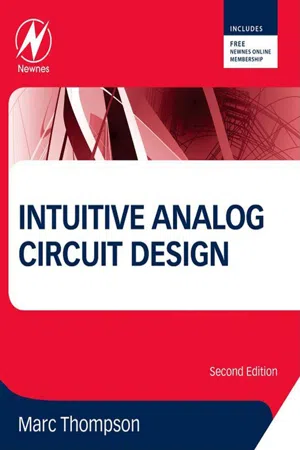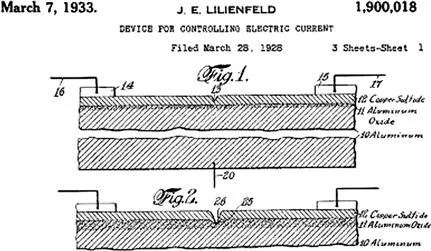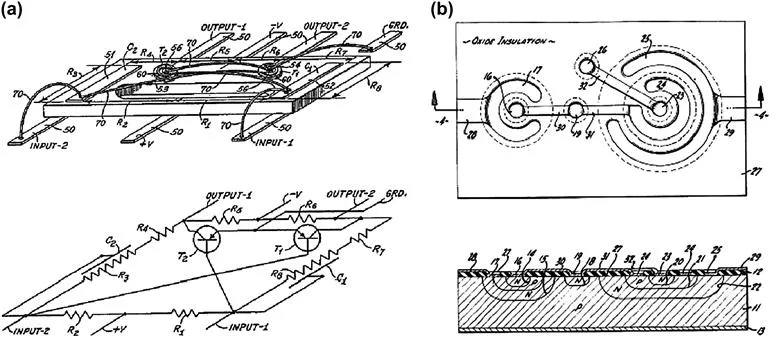Abstract
In this chapter, there is an inexorable trend in recent years to “go digital”—in other words, to do more and more signal processing in the digital domain due to a purported design flexibility. However, the world is an analog place and the use of analog processing allows electronic circuits to interact with the physical world. Not discounting the importance of digital signal processing (DSP) and other digital techniques, there are many analog building blocks such as operational amplifiers, transistor amplifiers, comparators, analog-to-digital (A/D) and digital-to-analog (D/A) converters, phase-locked loops, and voltage references (to name just a few) that are still used and will be used far into the future. Therefore, there is a continuing need for course development and education covering basic and advanced principles of analog circuit design.
—Seen outside teaching assistant's office in the 5th floor lab, MIT building 38, mid-1980s
The need for analog designers
There is an inexorable trend in recent years to “go digital”—in other words, to do more and more signal processing in the digital domain due to a purported design flexibility. However, the world is an analog place and the use of analog processing allows electronic circuits to interact with the physical world. Not discounting the importance of digital signal processing (DSP) and other digital techniques, there are many analog building blocks such as operational amplifiers, transistor amplifiers, comparators, analog-to-digital (A/D) and digital-to-analog (D/A) converters, phase-locked loops, and voltage references (to name just a few) that are still used and will be used far into the future. Therefore, there is a continuing need for course development and education covering basic and advanced principles of analog circuit design.
One reason why analog electronic circuit design is so interesting is that it encompasses so many different disciplines. Here is a partial “shopping list”, in no particular order, of disciplines encompassed by the broad field of analog circuit design:
• Analog filters: discrete or ladder filters, active filters, switched capacitor filters, and crystal filters.
• Audio amplifiers: power op-amps and output (speaker driver) stages.
• Oscillators: including LC, crystal, relaxation, and feedback oscillators; phase-locked loops; and video demodulation. We may also include in this category unintentional oscillators such as emitter followers that may oscillate at high frequencies.
• Device fabrication and device physics: metal oxide–semiconductor field-effect transistors (MOSFETs), bipolar transistors, diodes, insulated gate bipolar transistors (IGBTs), silicon-controlled rectifiers (SCRs), metal oxide–semiconductor (MOS)-controlled thyristors, etc.
• IC fabrication: operational amplifiers, comparators, voltage references, phase-locked loops (PLLs), etc.
• Analog-to-digital (A/D) interface: A/D and D/A, voltage references.
• Radio-frequency (RF) circuits: RF amplifiers, filters, mixers, and transmission lines; cable television (TV).
• Controls: control system design and compensation, servomechanisms, and speed controls.
• Power electronics: this field requires knowledge of MOSFET drivers, control system design, personal computer (PC) board layout, and thermal and magnetic issues; motor drivers; as well as device fabrication of transistors, MOSFETs, IGBTs, and SCRs.
• Medical electronics: instrumentation (electrocardiogram and nuclear magnetic resonance), defibrillators, and implanted medical devices.
• Simulation: SPICE and other circuit simulators.
• PC board layout: this requires knowledge of inductance and capacitive effects, grounding, shielding, and PC board design rules.
• Use of circuit analogies: using mechanical, magnetic, thermal, or acoustic “circuits” to model the behavior of systems.
Since we live in a world where more and more digital processing is taking place, analog designers must also become comfortable with digital-processing concepts so that we can all work together. In the digital world, some subsystem designs are based on analog counterparts. When designing a digital filter, one often first designs an analog prototype and then through an A/D transformation the filter is converted to the digital domain. For example, a bilinear transformation may be used where a filter designed in the s-domain (analog, using inductors, capacitors, and/or active elements) is transformed to a filter in the z-domain (digital, with gain elements and delays).
This technique stems in part from the fact that designers are in general more comfortable working in the analog domain when it comes to filtering. It is very easy to design a second-order analog Butterworth filter (you can find the design in any number of textbooks or analog filter cookbooks) but the implementation in the digital domain requires additional steps or other simulation tools.
Also, at sufficiently high frequencies, a digital transmission line or a high-speed signal trace on a PC board must be treated as a distributed analog system with traveling waves of voltage and current. Increasing density of digital ICs and faster switching speeds are adding to the challenges of good PC board design due to extra power requirements and other issues such as ground bounce.
The bottom line is that it behooves even digital designers to know something about analog design.
Some early history of technological advances in analog integrated circuits
The era of semiconductor devices can arguably be traced back as far as Dr Julius Lilienfeld, who has several U.S. patents giving various MOS structures (Figure 1.1). In three patents, Dr Lilienfeld gave structures of the MOSFET, metal-semiconductor field-effect transistor (MESFET), and other MOS devices.
FIGURE 1.1 Excerpt from Lilienfeld's U.S. patent 1,900,0182 (1933).
We entered the bipolar transistor semiconductor era over 50 years ago with early work in solid-state physics and the invention of the bipolar transistor, and significant technological advances in analog circuit design and device fabrication are still being made. In 1947–1948, Bardeen, Brattain, and Shockley demonstrated the first bipolar transistors (Figure 1.2).1
FIGURE 1.2 Excerpt from Shockley's U.S. patent 2,569,347 (1951).
The first ICs were produced around 1959 by teams at Fairchild Semiconductor and Texas Instruments (TI) (Figure 1.3). TI claims invention of the IC, with J.S. Kilby's U.S. patent “Miniaturized Electronic Circuits” #3,138,743, filed February 6, 1959. Workers at Fairchild filed for a patent on the first planar IC (arguably more easily manufactured than the TI invention) shortly after; see R.N. Noyce, “Semiconductor Device-and-Lead Structure”, U.S. patent # 2,981, 877, filed July 30, 1959.3
FIGURE 1.3 Diagrams from competing IC patents5 from Texas Instruments (a) and Fairchild (b).
These ICs had minimum feature sizes of around 125 μm. Since then, device geometries have gotten smaller and smaller with the invention and rapid improvements in the IC. Moore's law, named for Fairchild and Intel founder Gordon Moore, predicts that the density of transistor packaging in ICs doubles approximately every 18 months, a trend that has been proved to be remarkably accurate over the past 30 years.
At the time of this writing,4 IC manufacturers are using 22-nm manufacturing processes, and smaller transistor sizes are anticipated. Smaller size allows the packaging of more and more complicated structures in a given die area. Researchers5 are also actively working on three-dimensional IC structures in an attempt to pack more and more functionality into a given die volume.
After the invention of the IC around 1958–1959 by workers at TI and Fairchild, the first IC-operatio...




